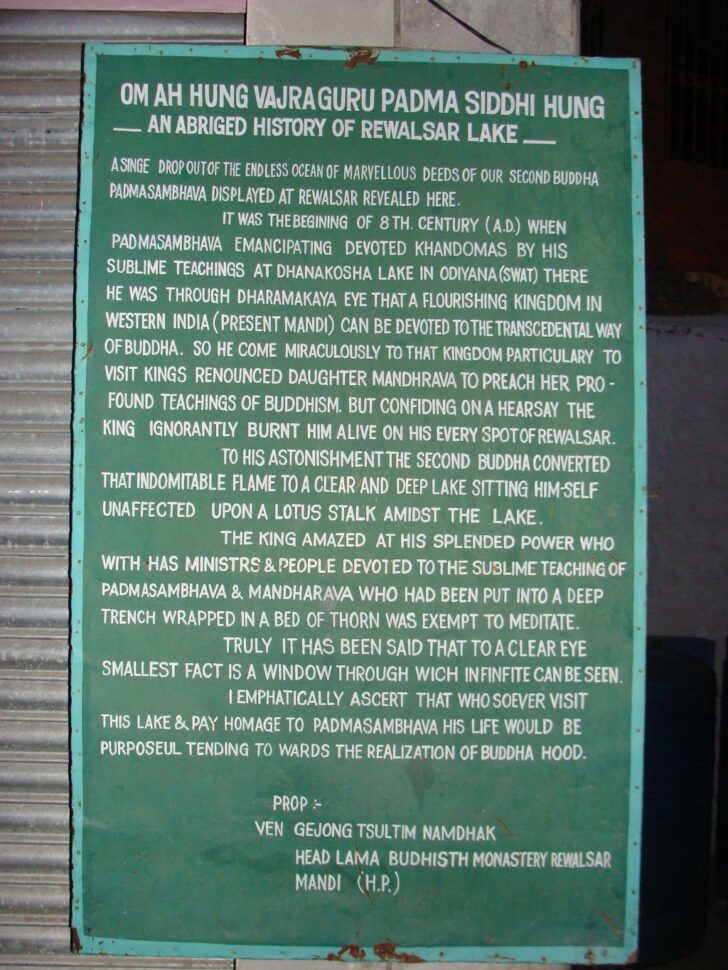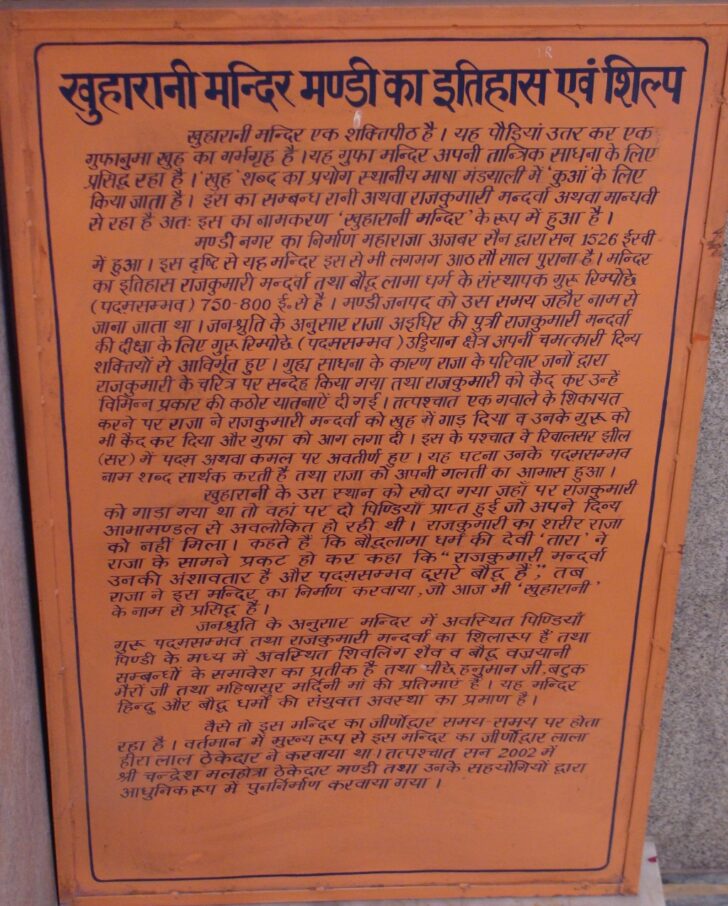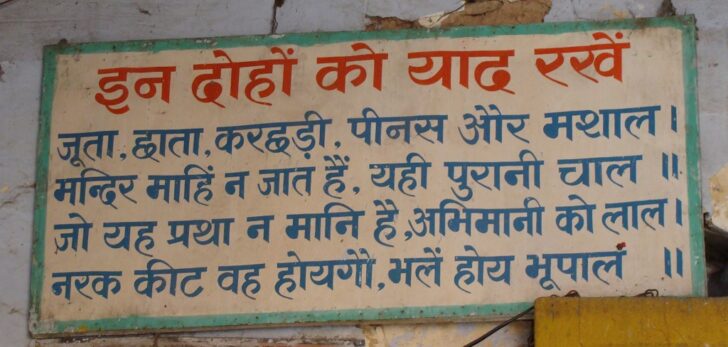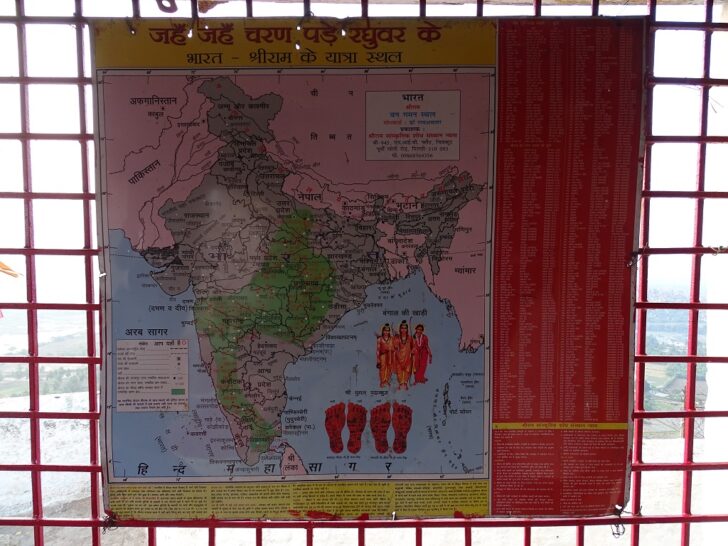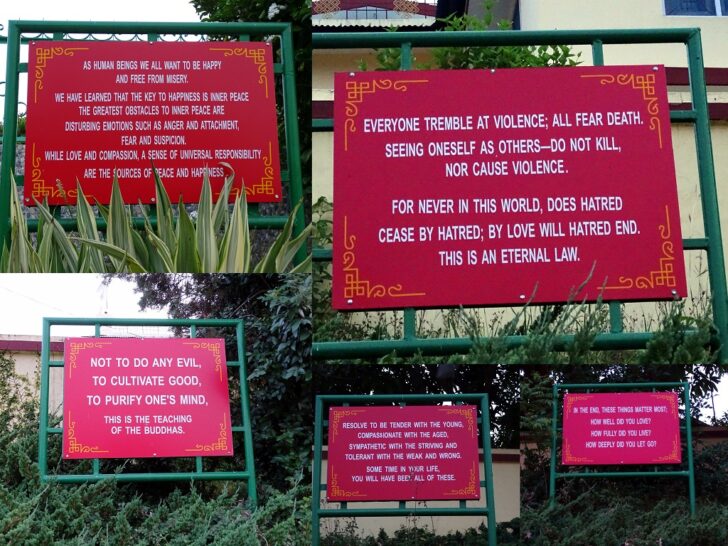Click to learn more about ‘Rewalsar Lake’.
History and Architecture of Khuarani Temple (Mandi)
Click to learn more about ‘Khuarani Temple (Mandi)’.
Remember these Couplets
Remember these Couplets – This photo was taken at Shri Radhavallabh Mandir in Vrindavan (Uttar Pradesh).
Brief History of Red Fort (Qila-i-Mubarak)
The Red Fort (28° 39′21″ N 77° 14′25″ E) is a 17th-century fort complex constructed by the Mughal emperor Shah Jahan in the walled city of Old Delhi. It served as the capital of the Mughals until 1857 when Mughal emperor Bahadur Shah Zafar was exiled by the British Indian government. During the British period, the Fort was mainly used as a cantonment and even after Independence, a significant part of the Fort remained under the control of the Indian Army until the year 2003.
Mughal Emperor Shahjahan started construction of this massive fort in 1639 and work was completed in 1648 (almost 10 years). The Red Fort was originally referred to as “Qila-i-Mubarak” (the blessed fort) because it was the residence of the royal family. The planning and aesthetics of the Red Fort represent the zenith of Mughal creativity which prevailed during the reign of Emperor Shah Jahan.
Red Fort showcases the very high level of art form and ornamental work. The artwork in the Fort is a synthesis of Persian, European, and Indian art which resulted in the development of unique Shahjahani style which is very rich in form, expression, and colour. It is relevant as a symbol of architectural brilliance and power.
The walls of the fort are smoothly dressed, articulated by heavy string courses along the upper section. They open at two major gates, the Delhi and the Lahore gates. The Lahore Gate is the main entrance; it leads to a long-covered bazaar street, the Chatta Chowk. Red Fort is Octagonal in plan, with two longer sides on the east and west, covering a perimeter of 2.41 km and rising to a height of 33 m on the town side & 18 m along the river. The Palaces lies along eastern side. The available main buildings are Naubat Khana, Diwan-i-Am, Diwan-i-khas, Moti Masjid, Rang Mahal, Hammam, Sawan-Bhado etc.
The Site was declared as the World Heritage site in 2007 under the World heritage convention criteria (ii), (iii), and (iv).
(Source: Display Board inside Red Fort, Delhi)
Shree Ram’s Travel Venue
Click to learn more about ‘Shree Ram’.
Buddhist Quotes from Dhammapada
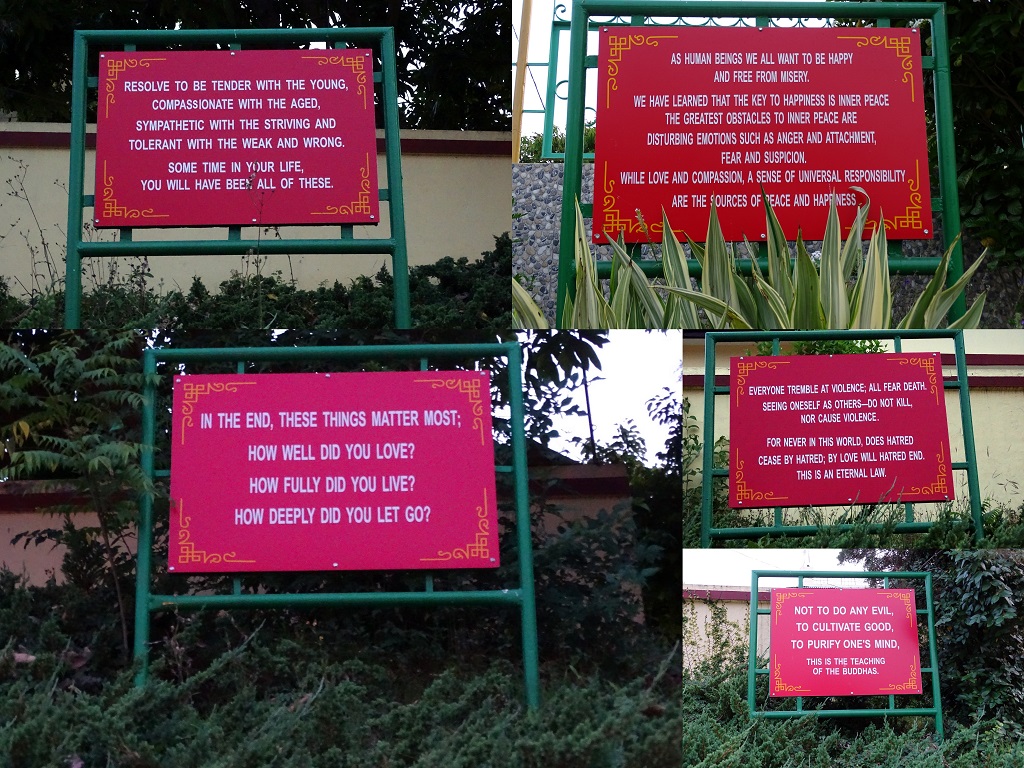 Buddhist Quotes from Dhammapada – These photos were taken at Mindrolling Monastery in Dehradun (Uttarakhand).
Buddhist Quotes from Dhammapada – These photos were taken at Mindrolling Monastery in Dehradun (Uttarakhand).
Who is The Inventor of ‘Tunday Kabab’?
Click to learn more about ‘Tunday Kababi’.
Who Invented ‘Rava Idli (steamed semolina cakes)’?
Click to learn more about ‘Mavalli Tiffin Rooms (MTR)’.
